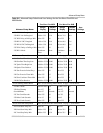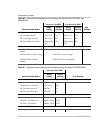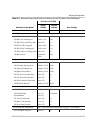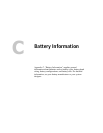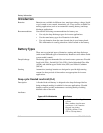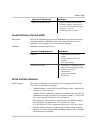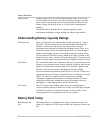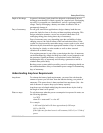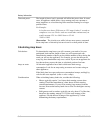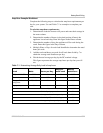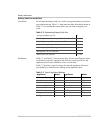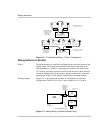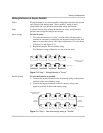
Battery Bank Sizing
976-0043-01-02 C–5
Depth of discharge In general, the battery bank should be designed so the batteries do not
discharge more than 60% of their capacity on a regular basis. Discharging
up to 80% is acceptable on a limited basis, such as a prolonged utility
outage. Totally discharging a battery can reduce its effective life or
permanently damage it.
Days of autonomy For off-grid, stand-alone applications, design a battery bank that can
power the loads for three to five days without requiring recharging. This
design calculation assumes a worst case scenario where there is no
recharging taking place during these days of autonomy.
Days of autonomy may vary depending upon the availability of other
charging sources, the critical nature of the load and other factors. If the
system is to be powered by renewable energy sources such as solar, wind,
and micro-hydro, determine the appropriate number of days of autonomy
by allowing for cloudy or calm weather as well as other seasonal
variations in available energy.
If an engine generator is part of the system design, the days of autonomy
can be determined by simply deciding how often you are prepared to run
the generator. Significant battery cost reductions can be achieved by
shortening the days of autonomy and allowing a generator to run for a
schedule time period daily.
Back up power systems which use utility power for recharging should use
the estimated number of days of maximum power outage for determining
days of autonomy.
Understanding Amp-hour Requirements
Amp-hours To estimate the battery bank requirements, you must first calculate the
amount of power you will draw from the batteries during your period of
autonomy. This power draw is then translated into amp hours (Ah)—the
unit of measure to express deep-cycle battery capacity.
Amp hours are calculated multiplying the current drawn by the load by
the length of time it will operate.
Watts to amps To calculate amps when the power consumption is expressed in watts, use
the following equation:
A = W/V
where W = watts and V = volts AC
For example:
A 100 watt light bulb will draw approximately 0.83 amps
0.83 = 100 /120
If the light runs for three hours it will consume (0.83 x 3) or 2.5 Ah of
power.



